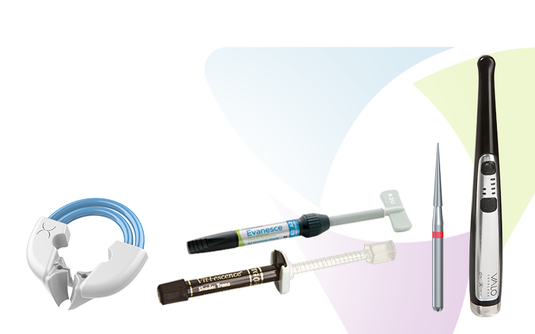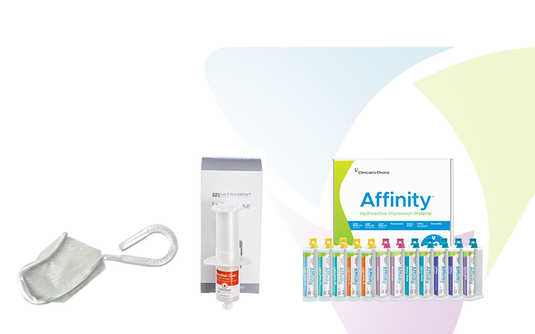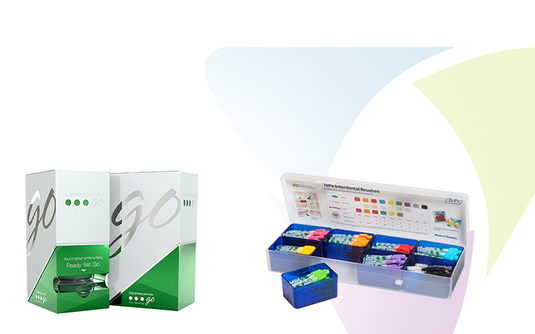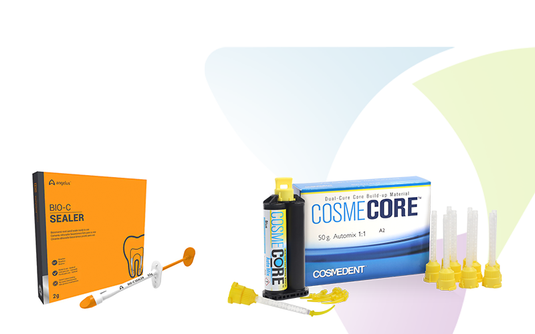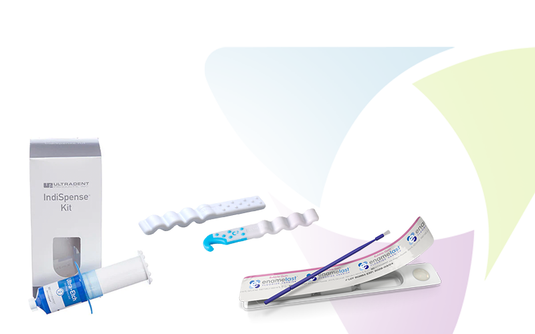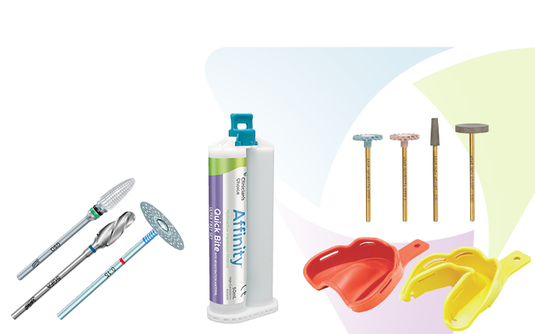
Ask the Expert: An Interview with Ed Lowe, DMD, AAACD on Soft Tissue Diode Lasers
Q: What type of clinical procedures can be done with a soft tissue diode laser?
Soft tissue diode lasers are commonly used in dentistry for various procedures due to their ability to precisely cut or vaporize soft tissues with minimal damage to surrounding healthy tissue. I have used soft tissue lasers since 1997 when they were large, expensive, cumbersome, and relatively archaic compared to today’s compact and featured loaded versions like the Bluewave™️ Soft Tissue Diode Laser.
Here are some clinical procedures in dentistry where I have frequently employed the use of a soft tissue diode laser:
- Gingivectomy and Gingivoplasty


- Frenectomy
- Crown Lengthening
- Treatment of Soft Tissue Lesions, such as fibromas, papillomas, and mucoceles
- Excisional or Incisional Biopsies
- Hemostasis
- Implant Uncovering


- Treatment of Peri-implantitis
- Treatment of Aphthous Ulcers & Herpetic Lesions
- Periodontal Pocket Therapy
- Depigmentation
- Desensitization
- Operculectomy
It’s important to note that while soft tissue diode lasers are valuable tools in dentistry, proper training and adherence to safety protocols are essential for their effective and safe use. Dental professionals should stay current with the latest guidelines and advancements in laser dentistry and ensure compliance with regulatory standards in their jurisdiction.
Q: What are the advantages of using a soft tissue diode laser over a scalpel or electrosurgery?
I will separate this question into two parts starting with the soft tissue diode laser vs. the scalpel.
Diode lasers offer several advantages over traditional instruments such as a scalpel in various dental procedures. Here are some key advantages:
Precision:
Diode lasers provide precise and controlled cutting, allowing for delicate and intricate soft tissue procedures. This precision is particularly valuable in cosmetic and periodontal surgeries.
Minimized Bleeding:
Diode lasers offer excellent hemostasis, coagulating blood vessels as they cut. This results in reduced bleeding during and after procedures, contributing to a
clearer surgical field and better visibility.
Reduced Discomfort:
Laser procedures are often associated with less postoperative pain and discomfort compared to traditional methods. The laser’s ability to seal nerve endings and
blood vessels can contribute to a more comfortable recovery for patients.
Faster Healing:
The precise nature of diode laser incisions can promote faster healing and tissue regeneration. This can result in shorter recovery times for patients.
Minimal Swelling:
Soft tissue diode lasers typically cause less trauma to the surrounding tissues, leading to reduced postoperative swelling compared to traditional scalpel surgeries.
Reduced Need for Anesthesia:
The use of a diode laser may reduce the need for local anesthesia, especially for minor soft tissue procedures.
Versatility:
Diode lasers are versatile and can be used for a wide range of soft tissue procedures, including gingivectomies, frenectomies, crown lengthening, and more. Their flexibility makes them valuable tools in various dental specialties.
Improved Sterilization:
The high temperatures generated by the laser during cutting contribute to improved sterilization of the treated area, reducing the risk of infection.
Enhanced Patient Experience:
Patients may perceive laser procedures as less invasive, leading to increased comfort and satisfaction, contributing to an overall positive patient experience.
Ease of Use:
Diode lasers are user-friendly and offer ease of use for dental professionals. They often come with customizable settings, allowing practitioners to tailor the laser’s parameters to specific procedures and patient needs. Soft tissue diode lasers and electrosurgery are both tools used in dentistry for various soft tissue procedures, and each has its advantages.
10
Things to Consider When Buying a Laser
Choosing a dental laser involves careful consideration of various factors to ensure that the selected device meets the specific needs and preferences of your practice. Some key factors to consider when evaluating and purchasing a dental laser are:
1
Type of Laser:
Each type of laser has specific applications and advantages.
Consider the procedures you plan to perform and choose a laser type (diode, erbium, CO2) that aligns with your practice’s needs.
2
Wavelength:
Select a wavelength that is suitable for the procedures you intend to perform. For example, diode lasers are often used for soft tissue procedures, while erbium lasers are suitable for both soft and hard tissue applications.
3
Power and Energy Settings:
A laser with adjustable settings allows for flexibility in treatment.
4
Delivery System and Fiber Optics:
Consider factors such as the flexibility and ease of use of the fiber, as well as the availability of different types of tips for various
procedures.
5
Ease of Use:
A user-friendly interface, intuitive controls, and easy set-up contribute to efficient and effective use in a dental practice.
6
Clinical Research and Evidence:
Look for clinical research and evidence supporting the effectiveness and safety of the laser system.
7
Training and Support:
Adequate training is crucial for using the laser effectively and
safely. Check if the manufacturer offers training programs,
educational resources, and customer support.
8
Size and Portability:
Portable or compact designs may be advantageous in certain
settings.
9
Cost and Return on Investment (ROI):
Evaluate the overall cost of the laser system, including the initial
purchase, ongoing maintenance, and any additional accessories or
consumables.
10
Regulatory Compliance:
Check for necessary certifications and approvals in your region.
Before making a final decision, it’s advisable to attend training sessions, demonstrations, and workshops to gain hands-on experience
with the laser system. Additionally, consult with colleagues, attend industry conferences, and seek input from professionals who have
experience with the specific laser model you are considering.
Some advantages of using a soft tissue diode laser over an electrosurgery unit include:
Precision and Control:
Diode lasers offer precise and controlled cutting, making them suitable for delicate and intricate soft tissue procedures. Electrosurgery, while effective, may be associated with less precision.
Minimized Tissue Charring:
Diode lasers typically result in minimal tissue charring compared to electrosurgery. Reduced charring can contribute to better healing and esthetic outcomes.
Reduced Post-operative Discomfort:
Soft tissue diode lasers often cause less post-operative discomfort compared to electrosurgery. The laser’s ability to seal nerve endings and blood vessels can result in a more comfortable recovery for patients.
Less Tissue Distortion:
Diode lasers cause minimal tissue distortion, preserving the natural architecture of the treated area. This can be particularly important in cosmetic and periodontal surgeries.
Hemostasis without Contact:
Diode lasers provide excellent hemostasis without direct contact with the tissue. In electrosurgery, tissue contact is necessary for coagulation, which can sometimes lead to tissue sticking.
Reduced Risk of Tissue Necrosis:
The reduced thermal damage associated with diode lasers minimizes the risk of tissue necrosis, contributing to healthier healing and potentially faster recovery.
Ease of Use:
Diode lasers often come with customizable settings, allowing practitioners to tailor the laser to specific procedures and needs of the patient.

Some advantages of using a soft tissue diode laser over an electrosurgery unit include:
Precision and Control:
Diode lasers offer precise and controlled cutting, making them suitable for delicate and intricate soft tissue procedures. Electrosurgery, while
effective, may be associated with less precision.
Minimized Tissue Charring:
Diode lasers typically result in minimal tissue charring compared to electrosurgery. Reduced charring can contribute to better healing and
esthetic outcomes.
Reduced Post-operative Discomfort:
Soft tissue diode lasers often cause less post-operative discomfort compared to electrosurgery. The laser’s ability to seal nerve endings and blood vessels can result in a more comfortable recovery for patients.
Less Tissue Distortion:
Diode lasers cause minimal tissue distortion, preserving the natural architecture of the treated area. This can be particularly important in
cosmetic and periodontal surgeries.
Hemostasis without Contact:
Diode lasers provide excellent hemostasis without direct contact with the tissue. In electrosurgery, tissue contact is necessary for coagulation, which can sometimes lead to tissue sticking.
Reduced Risk of Tissue Necrosis:
The reduced thermal damage associated with diode lasers minimizes the risk of tissue necrosis, contributing to healthier healing and potentially faster recovery.
Ease of Use:
Diode lasers often come with customizable settings, allowing practitioners to tailor the laser to specific procedures and needs of the patient.
10
Things to Consider When Buying a Laser
Choosing a dental laser involves careful consideration of various factors to ensure that the selected device meets the specific needs and preferences of your practice. Some key factors to consider when evaluating and purchasing a dental laser are:
1
Type of Laser:
Each type of laser has specific applications and advantages.
Consider the procedures you plan to perform and choose a laser type (diode, erbium, CO2) that aligns with your practice’s needs.
2
Wavelength:
Select a wavelength that is suitable for the procedures you intend to perform. For example, diode lasers are often used for soft tissue procedures, while erbium lasers are suitable for both soft and hard tissue applications.
3
Power and Energy Settings:
A laser with adjustable settings allows for flexibility in treatment.
4
Delivery System and Fiber Optics:
Consider factors such as the flexibility and ease of use of the fiber, as well as the availability of different types of tips for various
procedures.
5
Ease of Use:
A user-friendly interface, intuitive controls, and easy set-up contribute to efficient and effective use in a dental practice.
6
Clinical Research and Evidence:
Look for clinical research and evidence supporting the effectiveness and safety of the laser system.
7
Training and Support:
Adequate training is crucial for using the laser effectively and
safely. Check if the manufacturer offers training programs,
educational resources, and customer support.
8
Size and Portability:
Portable or compact designs may be advantageous in certain
settings.
9
Cost and Return on Investment (ROI):
Evaluate the overall cost of the laser system, including the initial
purchase, ongoing maintenance, and any additional accessories or
consumables.
10
Regulatory Compliance:
Check for necessary certifications and approvals in your region.
Before making a final decision, it’s advisable to attend training sessions, demonstrations, and workshops to gain hands-on experience
with the laser system. Additionally, consult with colleagues, attend industry conferences, and seek input from professionals who have
experience with the specific laser model you are considering.

About the Author

Ed Lowe, DMD, AAACD
Dr. Edward Lowe, B.Sc., D.M.D., is a 1986 graduate of UBC Dentistry and owns a private practice devoted to functional aesthetic dentistry in downtown Vancouver, BC. He is an
accredited member of the American Academy of Cosmetic Dentistry and has been the editorin-chief of the Journal
of Cosmetic Dentistry for the past 14 years. Dr. Lowe is a published author, mentors the TEST Vancouver Study Club and lectures internationally on comprehensive restorative
& aesthetic dentistry.
Discover More
This article was originally published in the Clinical Life™ magazine: Spring 2024 edition
Clinical Life™ magazine is a premier periodical publication by Clinical Research Dental Supplies & Services Inc. Discover compelling clinical cases from Canadian and US dental professionals, cutting-edge techniques, product insights, and continuing education events.

